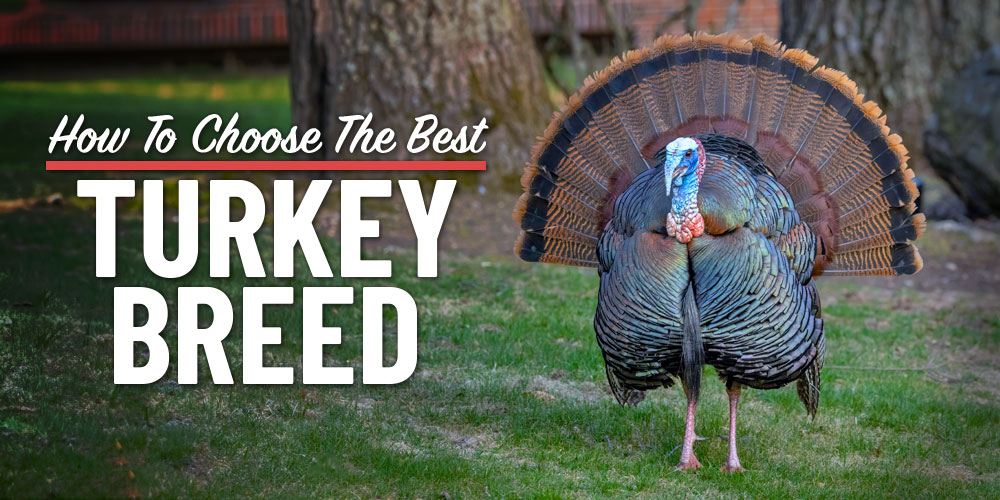
NAVIGATION
Turkeys can be an excellent addition to your homestead, but as you start looking into raising your own flock, you might be surprised to find out how many different turkey breeds there are. Each type of turkey breed brings unique characteristics, allowing you to pick precisely what your homestead needs.
Navigating the array of options can be overwhelming, but this guide will help you get clear on your goals, expectations, and preferences so you can confidently pick the right breed for you.

Hi, I’m Ryan
It took a few years before I added turkeys to my homestead — and narrowing down which turkey breed worked for me was a journey of its own. My initial picks were based on things like size and aesthetics, but I quickly realized how important it is to take other factors, like temperament and behavior, into the equation.

Choosing The Best Turkey Breed For Your Homestead

When you’re just starting out, one of the most difficult decisions you’ll need to make is which breed to pick. But I’m here to guide you through the dozens of available turkey varieties and simplify the process so it’s easier to choose.
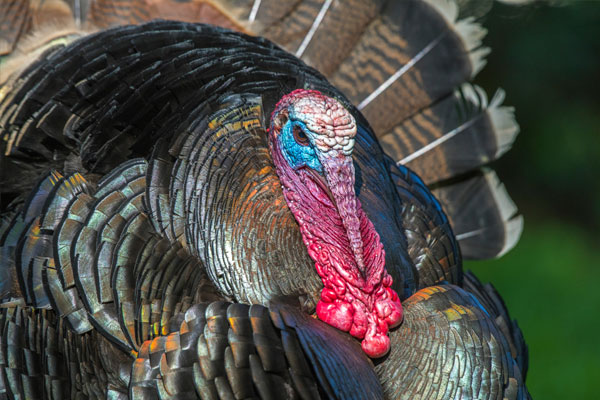
One thing to keep in mind is that turkeys are flock animals, so you’ll want to keep them in groups of at least three to six.
While mixing and matching turkey breeds is fine (most breeds get along), avoid keeping large turkey toms near smaller hens of a different breed. Otherwise, the toms may accidentally injure them.
The Best Turkey Breeds To Raise On Your Homestead

Every homestead is as different and unique as its owner, so what works for some might not be ideal for others. This is especially true for people new to homesteading or who have just started raising poultry. Choosing the right turkey breed to raise on your homestead will help ensure things run smoothly. To help you do that, I’ll break down the main characteristics of some of the most common types of turkeys.
Standard Bronze Turkey Breed
For most of American history, the Standard Bronze has been the most popular turkey breed.
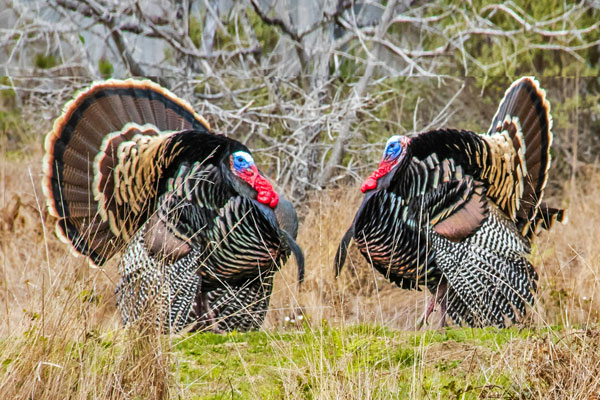 A cross between European and native Eastern American turkeys, Standard Bronzes are a classic heritage turkey breed cherished for their striking appearance and exceptional flavor. Standard Bronzes have a chocolaty brown coloring accented with a coppery, blue-green sheen.
A cross between European and native Eastern American turkeys, Standard Bronzes are a classic heritage turkey breed cherished for their striking appearance and exceptional flavor. Standard Bronzes have a chocolaty brown coloring accented with a coppery, blue-green sheen.
I’ve found that the meat is equally desirable and boasts a hearty, savory flavor. As farmers move away from heritage breeds, Standard Bronzes are becoming less common. However, they’re an easy-to-care-for, good-looking variety that’s excellent for both meat and egg production.
Jersey Buff Turkey Breed
Jersey Buffs are a medium-sized heritage turkey breed celebrated for their warm, reddish-gold plumage and gentle disposition.
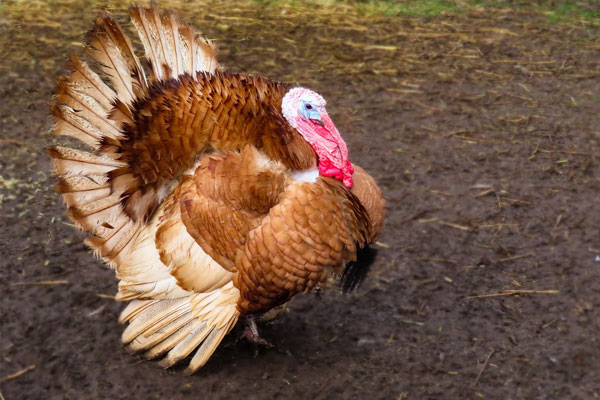 They have tender, flavorful, succulent, and mildly sweet meat that happens to be my favorite. Jersey Buffs are also good egg producers, which is important if you plan on breeding your turkeys.
They have tender, flavorful, succulent, and mildly sweet meat that happens to be my favorite. Jersey Buffs are also good egg producers, which is important if you plan on breeding your turkeys.
Despite their calm dispositions, Jersey Buffs need considerable mental stimulation. They’re curious, active, and highly intelligent turkeys who explore their environment thoroughly. While that makes them excellent foragers, it can also lead to trouble with predators. Therefore, I usually recommend Jersey Buffs for small-scale or hobby farms where keeping an eye on them is more manageable.
Blue Slate Turkey Breed
Heritage breeds are becoming increasingly rare in modern times, and experts believe Blue Slate turkeys are headed toward extinction, as fewer farmers are willing to invest time and energy into this slow-growing breed. Despite this, Blue Slate is one of the best turkey varieties for homesteaders looking to raise turkeys for pets, meat, or exhibitions.
I’ve never raised Blue Slate turkeys, but my friends have raised them for their gorgeous feathers. They have a distinctive slate-colored plumage with accents of green and blue. Their meat is equally desirable and is best described as firm, moist, and incredibly flavorful due to their high percentage of dark meat.
White Holland Turkey Breed
All in all, they make an eye-catching addition to the homestead and are as beloved for their appearance as they are for their delicately flavored meat.
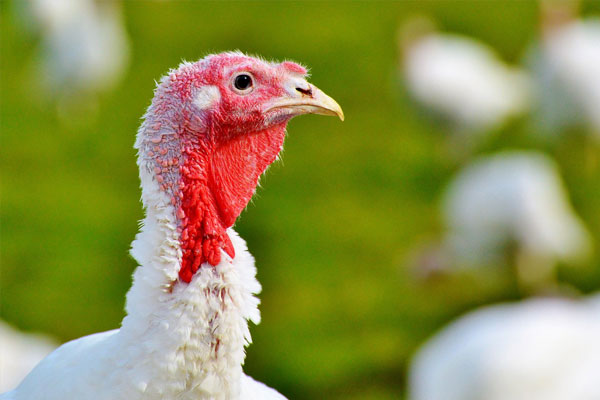
Beltsville Small White Breed
There’s a common misconception that you can’t raise turkeys without a ton of space. While this may be true for large varieties, it isn’t the case with the Beltsville Small White turkey breed.
In addition to being low-maintenance, I’ve noticed that Beltsville Small Whites have plenty of juicy white meat and well-built breasts.
Unfortunately, authentic Beltsville Small Whites are rare, so you won’t have much luck finding poults at a commercial hatchery. Instead, you’ll likely have to hunt down a private breeder. But if you manage to get your hands on a few Beltsville Small White chicks, their strong reproductive capabilities mean it won’t be long before you have more.
Orlopp Bronze Turkey Breed
Orlopp Bronze turkeys are the broad-breasted counterpart to the heritage Standard Bronze.
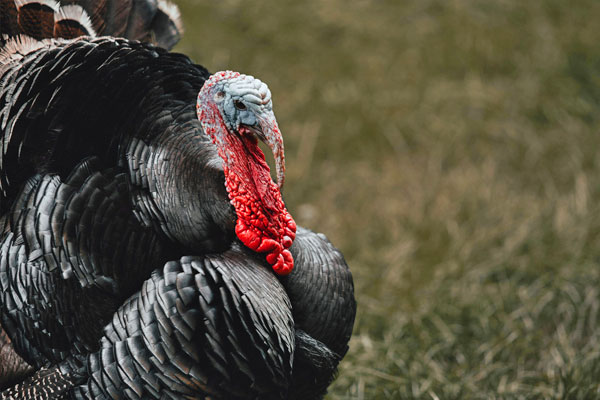 Compared to other broad-breasted breeds, Orlopp Bronzes are slow-growing and take a couple more weeks to reach maturity. Fortunately, that time is offset by their excellent feed conversion rate. That means you’ll need less feed per pound.
Compared to other broad-breasted breeds, Orlopp Bronzes are slow-growing and take a couple more weeks to reach maturity. Fortunately, that time is offset by their excellent feed conversion rate. That means you’ll need less feed per pound.
Females reach maturity in about 18 weeks and peak at 23 pounds. Males, on the other hand, finish at 20 weeks and up to 40 pounds.
And I think you’ll be pleasantly surprised by the meat. It has natural fat layering, which amps the flavor and gives the meat a buttery, melt-in-your-mouth texture.
Royal Palm Turkey Breed
Royal Palms are considered one of the most visually striking heritage turkey breeds and are often kept as pets. They have red or blue-white heads and white neck feathers accented by jet-black backs, beards, and breast feathers.
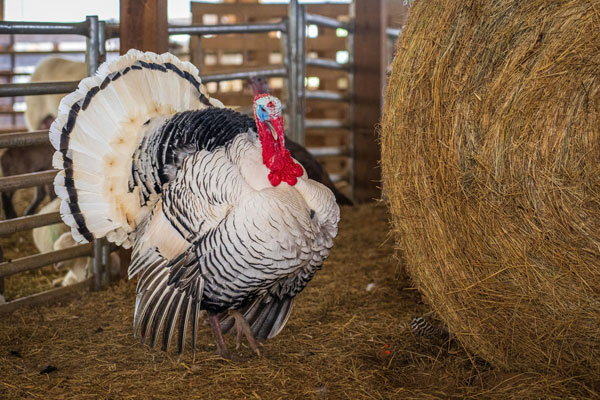 Royal Palms are popular among homesteaders as exhibition birds and for insect-related pest control, thanks to their excellent foraging skills.
Royal Palms are popular among homesteaders as exhibition birds and for insect-related pest control, thanks to their excellent foraging skills.
Royal Palms are less popular when it comes to meat production, as they only yield about 8 to 11 pounds of meat instead of the 16 to 18 pounds typical of other heritage breeds.
They also aren’t very suitable for egg production as their eggs are inconsistent compared to other dedicated egg-laying breeds.
Narragansett Turkey Breed
The Narragansett turkey is a distinguished heritage breed often celebrated for its striking coloration and exceptional flavor.
In addition to being prized for their looks, Narragansetts are popular for their tender and succulent meat. They have heavy breasts and dark, rich meat with plenty of traditional turkey flavor. They’re also excellent foragers and adapt well to various climates (which will help you save money on feeding costs).
Midget White Turkey Breed
At a maximum weight of 13 pounds, Midget Whites are one of the smallest varieties of turkeys. In fact, they’re only moderately larger than chickens. Known for having a high feed conversion, Midget Whites are a heritage breed prized for their compact size and friendly demeanor.
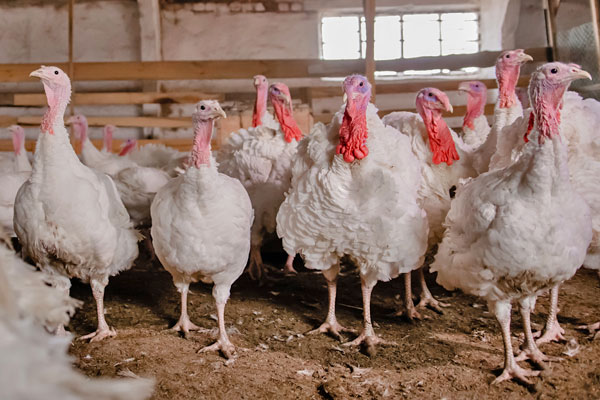 Despite their small stature, Midget Whites are almost exclusively raised for their meat and eggs. They’re prolific egg layers, which is handy if you plan on breeding your turkeys or harvesting the eggs.
Despite their small stature, Midget Whites are almost exclusively raised for their meat and eggs. They’re prolific egg layers, which is handy if you plan on breeding your turkeys or harvesting the eggs.
Their meat is also notable, as it packs a punch and is exceptionally tender. And, despite being extremely dark, it lacks the gaminess that is common amongst heritage breeds. Instead, Midget White meat is succulent and clean tasting with incredible sweetness and depth of flavor. Overall, Midget Whites are highly adaptable birds and are a popular choice amongst homesteaders looking for a breed that excels both in the coop and on the table.
Broad-Breasted Bronze Turkey Breed
A variation of the Standard Bronze, the Broad-Breasted Bronze is one of the, if not the most popular broad-breasted breeds.
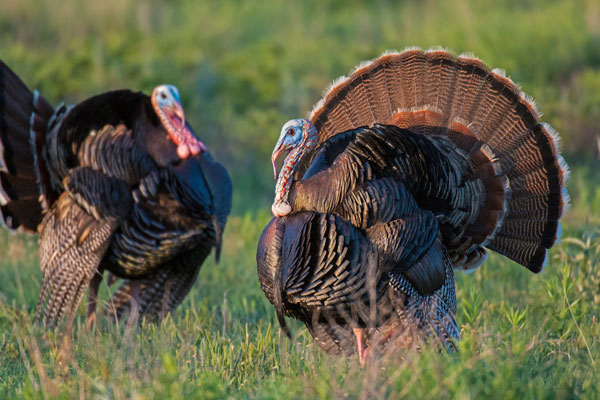 Broad-Breasted Bronzes grow much faster than their heritage counterparts and can reach whopping weights of 22 to 40 pounds. They’re harvested at 18 to 20 weeks, and yield between 20 to 30 pounds of meat.
Broad-Breasted Bronzes grow much faster than their heritage counterparts and can reach whopping weights of 22 to 40 pounds. They’re harvested at 18 to 20 weeks, and yield between 20 to 30 pounds of meat.
Broad-Breasted Bronzes are great for meat production and make decent pets, but there are a few caveats to be aware of. They have stubborn, dark pin feathers that can be difficult to remove from the meat — even with processing. They also aren’t able to reproduce naturally and often crush eggs because of their mammoth size.
Broad-Breasted White Turkey Breed
Bred for its beautiful white plumage, the Broad-Breasted White is among the most popular turkey breeds for beginners and experienced turkey breeders.
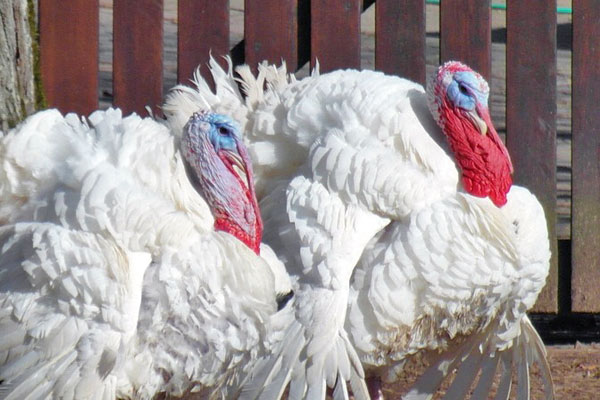 They’re docile, easy to handle, and more than content to live sedentary lifestyles. Broad-Breasted Whites are also one of the fastest-growing large turkey breeds, typically reaching maturity in 18 weeks.
They’re docile, easy to handle, and more than content to live sedentary lifestyles. Broad-Breasted Whites are also one of the fastest-growing large turkey breeds, typically reaching maturity in 18 weeks.
When harvested, they provide about 20 to 29 pounds of meat, depending on the gender. Their meat is mild in flavor and breast-heavy, so it’s best suited for those who enjoy white meat. But even if you don’t, the juicy meat can easily be enhanced with some homegrown spices, veggies, and herbs.
Bourbon Red Turkey Breed
Bourbon Reds are another popular heritage breed known for their stunning copper-red plumage.
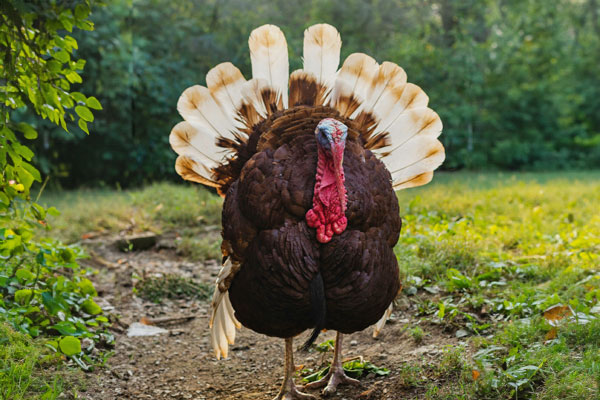 Like other heritage breeds, their meat is tender and full-flavored, and because they’ve been bred specifically for their exceptional breast meat, they make a fantastic Thanksgiving dinner.
Like other heritage breeds, their meat is tender and full-flavored, and because they’ve been bred specifically for their exceptional breast meat, they make a fantastic Thanksgiving dinner.
Bourbon Red has had little to no selective breeding, so fully grown toms will reach up to 23 pounds and females just 14. In addition to being a solid choice for meat, I’ve found that Bourbon Reds are a pleasure to raise. They’re friendly with a social and outgoing personality. The one downside to Bourbon Reds is that they can be difficult to pluck. But to me, the meat is well worth the extra work.
Black Turkey Breed
In terms of production, Black turkeys are slow-growing but have strong egg-laying capabilities and provide a decent amount of meat. It’ll take about 36 weeks until they reach maturity, and both toms and hens will yield the same amount of meat as a Bourbon Red.
The Difference Between Heritage And Broad-Breasted Turkey Breeds

As you can probably tell by the name, heritage turkeys are traditional turkey breeds. They’ve had minimal selective breeding and, as a result, retain most of their natural, wild characteristics.
On the other hand, broad-breasted turkeys are bred exclusively for meat production. They mature in just 18 to 20 weeks and have had the vast majority of their natural traits selectively bred out of them. They typically cannot fly, run, or breed without human intervention. Instead, they put on weight rapidly — so quickly that their bones and organs can’t adjust to the weight. As a result, broad-breasted breeds are usually butchered right after maturity, before the health issues begin.
Specific Turkey Breeds For Different Purposes

Most turkey breeds are well-rounded enough to meet a homesteader’s needs. But if you’re after a specific trait or quality, that can help you narrow down your choice of breed more easily. Some breeds of turkey are best suited for laying eggs, while others make excellent pets or provide a lot of meat. Let’s break things down further.
Turkeys For Thanksgiving Turkey Dinner
Over 88% of American households serve turkey on Thanksgiving, so naturally you’ll want to pick the right breed for your Turkey Day dinner.
Although broad-breasted breeds grow quickly and provide a ton of meat, I recommend opting for a heritage breed because they taste much better.
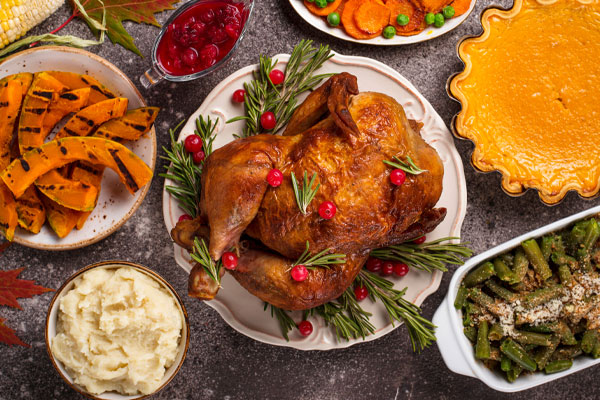
Heritage breeds develop layers of fat beneath the skin, giving them a rich, gamey quality that far exceeds anything in a traditional grocery store. My favorite Thanksgiving breeds include Bourbon Reds, Broad-Breasted Bronzes, Broad-Breasted Whites, Standard Bronzes, White Hollands, and Midget Whites.
Turkey Breeds For Meat
People raise turkeys for many reasons, but the most common reason is to harvest the meat. When deciding which turkey breed to raise for meat, you’ll first have to decide if you prioritize quality over quantity or vice versa.
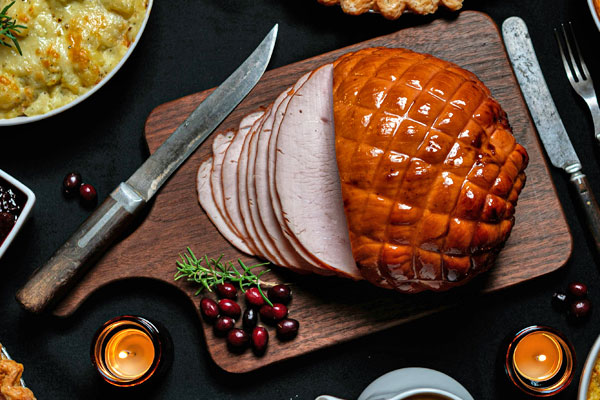 Heritage breeds are slower growing, more expensive to raise, and provide less meat. But, for fans of dark meat with deep flavor, heritage breeds are unrivaled in taste. For richly flavored meat with a larger dark-to-light meat ratio, opt for heritage breeds like Bourbon Reds, Midget Whites, Narragansetts, and Royal Palms.
Heritage breeds are slower growing, more expensive to raise, and provide less meat. But, for fans of dark meat with deep flavor, heritage breeds are unrivaled in taste. For richly flavored meat with a larger dark-to-light meat ratio, opt for heritage breeds like Bourbon Reds, Midget Whites, Narragansetts, and Royal Palms.
If you prefer more traditional turkey meat (like the kind you’d find in grocery stores), stick with larger, broad-breasted breeds like Broad-Breasted Bronzes, Broad-Breasted Whites, and Orlopp Bronzes. In addition to having a much higher percentage of white meat, broad-breasted breeds mature quickly (which will save you time and money) and provide two to three times more meat than heritage breeds.
Turkey Breeds For Eggs
In terms of flavor, turkey eggs are nearly identical to their chicken counterparts. However, turkey eggs are larger and have a slightly higher fat content. While all turkey breeds will lay eggs, some of the best breeds for egg production include Jersey Buffs, Bronzes, Midget Whites, and Beltsville Small Whites.
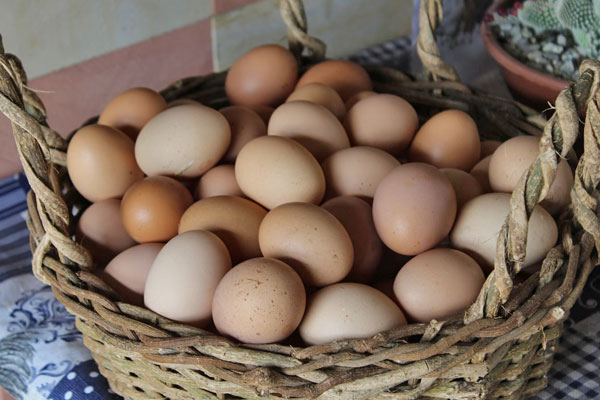
Turkey Breeds As Pets
I’ve always said that a homestead just isn’t complete without a few pets running around. When raising turkeys for companionship, you generally want to go with heritage breeds rather than broad-breasted turkeys. Once they reach maturity, broad-breasted turkeys are plagued with health issues and have an average lifespan of fewer than five years. On the other hand, heritage turkeys regularly live long, healthy lives of 10 to 15 years.
 Another thing to consider is that heritage breeds have all of their wild traits intact. As a result, they have curious, inquisitive natures that make them much better at providing companionship. While most heritage turkey breeds make excellent pets, Midget Whites, Merriams, Royal Palms, Bourbon Reds, Jersey Buffs, Narragansetts, and Heritage Orlopp Bronzes are known for being easy to manage, sociable, and docile.
Another thing to consider is that heritage breeds have all of their wild traits intact. As a result, they have curious, inquisitive natures that make them much better at providing companionship. While most heritage turkey breeds make excellent pets, Midget Whites, Merriams, Royal Palms, Bourbon Reds, Jersey Buffs, Narragansetts, and Heritage Orlopp Bronzes are known for being easy to manage, sociable, and docile.
Whether you prioritize meat production, egg-laying, temperament, or aesthetics, there’s a turkey breed out there to meet your needs. Additionally, by opting for heritage breeds, you not only fulfill your own needs but can contribute to conservation efforts and help ensure that these valuable breeds are around for generations to come.
With so many factors to consider, taking the time to carefully assess your goals is essential to ensuring the success of your flock. Hopefully, this guide will help you identify those goals and select the right turkey breed for you.
Your Turn!
- Dark meat or white meat: what kind of turkey meat do you prefer?
- Do you have a favorite turkey breed? If so, which one and why?




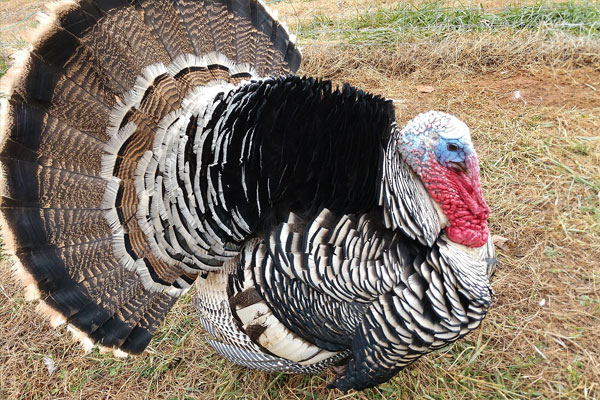


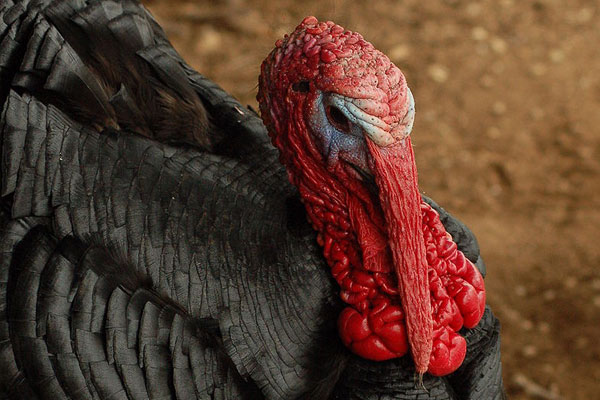
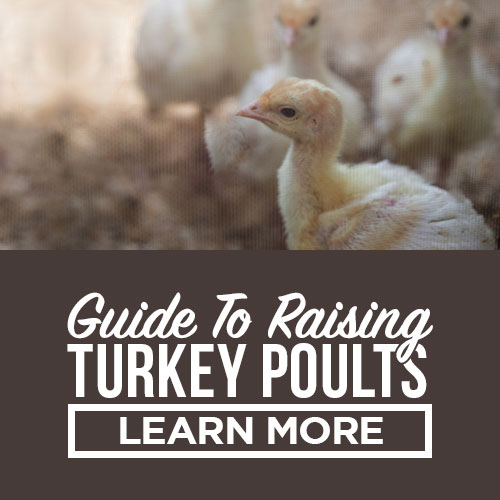

Leave a Reply